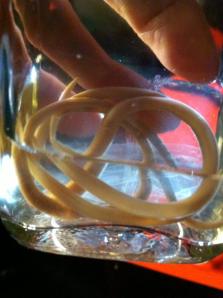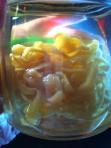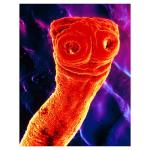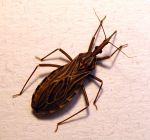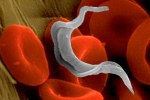Parasites, parasites of the intestinal walls! Which is the most gross of them all? The most gross parasite title has to go to the most common of helminths, Ascaris lumbricoides.
According to the World Health Organization, Ascaris Lumbricoides infects approximately 30% of the world’s population. Infections for the most part, are in the rural areas of developing countries that use untreated human waste for fertilizer and irrigation. Without access to clean water and expensive fertilizer, farmers are left with little else to use, but human waste to grow their produce. A 2008 report in National Graphic news on the use of Human Waste cites that 200 million farmers world wide use human waste for fertilizer. The eggs from human feces used as fertilizer end up in the soil where they can stay fertilized for up to 10 years.
The eggs find their way into the human food chain via contaminated unwashed hands during food preparation, unwashed fruit and, or undercooked vegetables or fruit. When fertilized eggs are ingested, the eggs hatch in the upper intestinal tract where the larvae then penetrate the wall and move into the portal and systemic circulatory system. Once in the circulatory system, the larvae enter the lungs. In the lungs, the larvae penetrate aveoli walls and make their way up the bronchial tree to the throat. The larvae is swallowed by the host and ingested. In the lower intestines, the larvae attaches to the mucosa of the wall and feeds off the host’s partly digested food and grows to an adult. Adult Ascaris lays up to 200,000 eggs per day. The eggs are then excreted in feces. The infected feces returns to the land as fertilizer and the life-cycle of A lumbricoides repeats.
The Ascaris worm grows to approximately 30cm and about 2-4mm in diameter. The females are a little thicker and longer with their vulva making up a third of the length of the body. Gulp!
Sources:
Introduction to Microbiology, 9th Edition, Tortora, Gerard.J, Funke, Berdall R., Christine L. Case. Publisher: Pearson Benjamin Cummings. 2007 print.
Center for Disease Control – Ascariasis page
National Geographic 2008 report on use of human waste as fertilizer.
Ask a Scientist website
Dr. J. McKerrow UCSF page.
